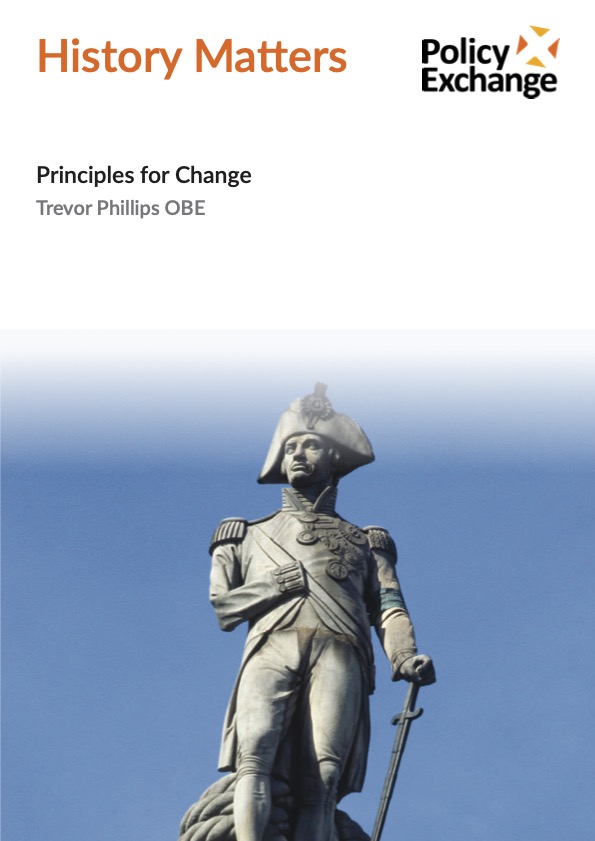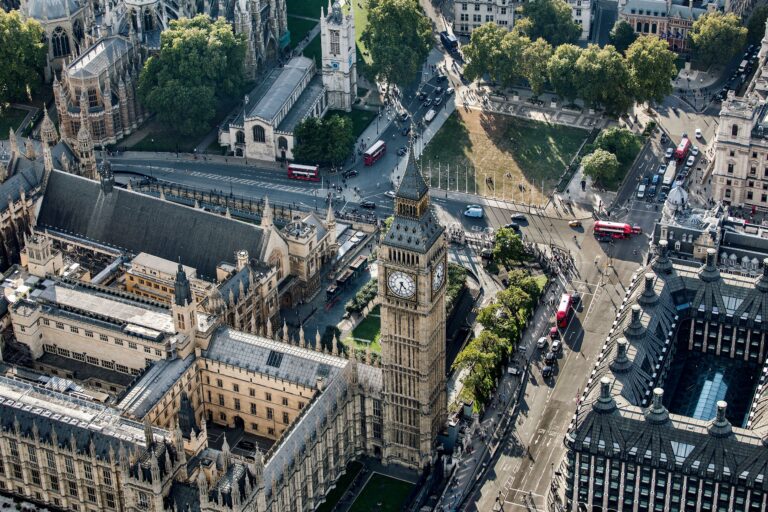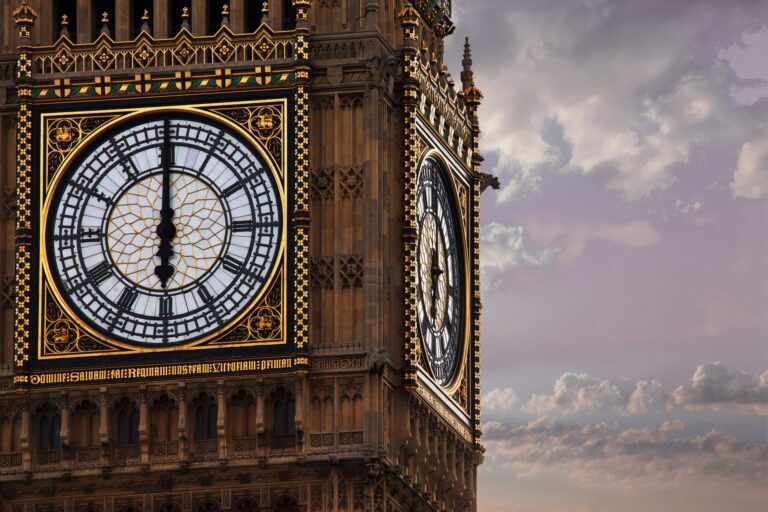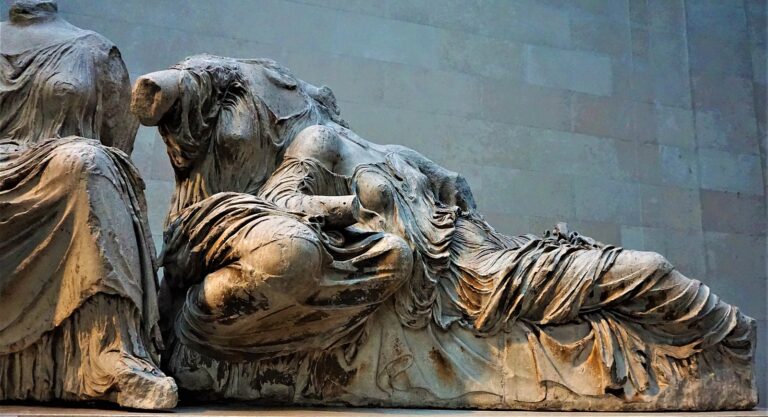Authors
Content
-
- 1. Any decision-making body must be identified clearly, with its composition and powers set out publicly and unambiguously.
- 2. Any change must be lawful and consistent with the stated aims and purpose of the institution.
- 3. Any individual or board making a decision about change in a public institution must be accountable to those who support the institution, including the taxpayer.
Introduction
Change in the way that the nation understands and represents our past is not novel. However, it has become increasingly unclear what should trigger the consideration of changes in the public sphere; who should be responsible for decision-making; and what process should be followed in the execution of changes.
Policy Exchange’s History Matters project was established in June 2020 to address widespread national concern about the growing trend to alter public history and heritage without due process. Through the regularly updated History Matters compendium, we have been documenting attempts at historical re-interpretation and re-invention, gathering evidence about the processes by which changes to the national teaching and display of history have been made. What this has revealed is that in many cases the alteration of public history is taking place—whether through the removal of statues, the renaming of streets, the re-evaluation of school curricula or the removal of museum exhibits—without a rigorous and non-partisan approach having been taken.Our engagement with museum donors and curators, school governors, councillors and a wide range of other stakeholders has shown that there is currently no universally-applicable guidance in place for institutions on how they should respond to calls for change. There is a pressing need for an approach to change that is rational, non-partisan and capable of application in a wide variety of circumstances. We have therefore decided, informed by the insight and expertise of senior individuals representing a broad spectrum of fields and institutions, to identify and put forward a set of key overarching principles applicable to any institution and to any context by which proposals to re-interpret our history should be assessed. We have produced this as our contribution to the deliberations of the DCMS advisory board.
Why do we need these principles?
The aim of the principles is not to prevent change. Rather, it is to safeguard professional integrity and competence by providing heads of institutions with a clearly-defined procedure through which, once they have demonstrated that there may be a basis for change, they can determine the best approach to take regarding any proposed change, thereby ensuring that where change does take place it is legitimate.
The principles outlined in this paper would ensure that any such alteration takes place only when a clear and positive case for change has been established, due regard having been paid to the views and wishes of the institution’s supporters, including taxpayers; to the interests of present and future generations; and to the legacies of past generations. Paying due regard to the past includes considering the historical context of the matter at hand, such as the spirit in which a donation was made or in which a statue was put up.
Decisions about change should not unduly be influenced by what may be temporary shifts in public sentiment or taste. In all instances an impact assessment is needed: the decision-making body must pay attention to the potential consequences of change.
These principles are aimed at institutional decision-making bodies, and are based on answers to the following key questions:
- Is change needed at all? Has there been a change in circumstances? Has new knowledge come to light?
- What is the process by which a body should make change? Who is the ultimate decision-maker? Who should be consulted and how should consultation take place? Is there an overarching authority to consult?
- Have all potential consequences of change been evaluated? Are there past or future generations whose interest should be considered?
Preamble
The principles set forth in this paper have been designed such that they can be applied by any public institution to any context in which the reinterpretation of history is being considered, and irrespective of external factors such as which party is in power. They are a self-governing set of principles which complement and enhance existing legislation, setting out a framework for best practice which ensures that any decision-making bodies are clearly defined before a process of change begins; any change is compliant with national law and in keeping with the institution’s stated aims and purpose; and institutions are accountable to their supporters, including donors, members, volunteers and taxpayers. Any change must be durable and based on rigorous analysis of impacts and risk.
We understand that there are a whole range of decisions that could be taken in this sphere, from relatively small changes, such as moving a bust, to significant changes, such as those that transform the public landscape. Accordingly, whilst these principles are universally applicable, it is important to view them through the lens of proportionality. Practicality, as well as the magnitude of the proposed change, will govern the precise method through which each principle is carried out.
Robustness, transparency and non-partisanship should characterise every step of the decision-making process.
Next chapterPrinciples
- Any decision-making body must be identified clearly, with its composition and powers set out publicly and unambiguously.
- Any change must be lawful and consistent with the stated aims and purpose of the institution.
- Any individual or board making a decision about change in a public institution must be accountable to those who support the institution, including the taxpayer.
1. Any decision-making body must be identified clearly, with its composition and powers set out publicly and unambiguously.
Before an institution begins the process of re-interpreting the past, it must establish and set out clearly and publicly who the decision-making body is.
The composition of the decision-making body will depend on the nature of both the institution and the matter at hand. Whereas in some cases, the decision-maker will be a single individual, in many circumstances it will be a much larger group, consisting of the institution’s management as well as governors or trustees.
The decision-making body is accountable at all times to the institution’s supporters and should consult all relevant stakeholders—including, in some cases, the general public—before coming to a decision (see Principle 3), but ultimately it is in charge of making a decision: no external body—whether a pressure group, the Government or an external commission, however powerful—has this authority.
2. Any change must be lawful and consistent with the stated aims and purpose of the institution.
All institutions must, before embarking on a decision-making process regarding any proposed change, first consider whether there is a positive prima facie case for that change. This may arise, for instance, if new and significant knowledge comes to light. The proposed change must be deemed to be proportionate in light of what the relevant knowledge has shown about the matter at hand.
Having demonstrated that there is a reasonable and legitimate case for change, the next step for the decision-making body is to ensure that such a change would be consistent with existing legislation on the matter. Relevant legislation could, depending on the matter at hand, range from planning law to a National Heritage Act.
Relatedly, any change to the public representation and interpretation of the past must be consistent with the objectives of the institution concerned. Change should be justified based on the institution’s founding articles and should embody the aims and values outlined within them. Any action by the institution should be in keeping with its core stated functions, be this the transmission of knowledge (the scope of which may be defined in the founding documents); the maintenance of public heritage; or the display of national history. For instance, an institution the stated purpose of which is to be a custodian of the past—with objects entrusted to it so that it can preserve them for future generations—should not exceed its custodial function.
Public institutions can ultimately be held to account by the relevant Secretary of State. In relation to public heritage and the built environment, the relevant Secretary of State is the Housing, Communities and Local Government Secretary; in the case of museums and galleries, the Culture Secretary; and in the case of schools and universities, the Education Secretary. Whilst this is not an exhaustive list (Kew Gardens, for instance, comes under the remit of the Secretary of State for Environment, Food and Rural Affairs), it gives an indication of which Secretaries of State likely have oversight over the various types of institutions. It is neither feasible nor desirable that the relevant Secretary of State should pronounce his or her judgement on every decision concerning the reinterpretation of history.
The wishes and intentions of past benefactors should be taken into account. Failure to do so could disincentivise others from becoming benefactors themselves: something which would be of great detriment to society. This consideration is particularly relevant to the arts sector, which relies heavily on donations and legacies. Trust between institutions and those who support them is of paramount importance; if people have little confidence that an institution will keep to its word, they will be far less likely to support the institution.
3. Any individual or board making a decision about change in a public institution must be accountable to those who support the institution, including the taxpayer.
Change is only justified if it can reasonably be expected to withstand the test of time. Decisions should be seen as long-term and deemed to be in the interests of past and future generations. They must therefore not be made hastily but after careful consideration.
In order to assess whether change might be justified, a robust cost-benefit analysis must be undertaken in which the possible positive and negative impacts of change are identified and the trade-off is considered by key stakeholders (see appendix for examples of relevant stakeholders in different scenarios). The results of the analysis should be weighed against the objectives of those proposing the change. This would determine whether the action is justified in light of the expected consequences. Costs should include any risk that might be attached to the change, any disruption it might cause and any financial costs it might incur.
The decision-making body must pay due regard to the views and sentiments of those who support the institution, including donors, members, volunteers and taxpayers. This entails carrying out as wide-reaching a consultation as possible and appropriate. The consultation may be internal or external, depending on the magnitude of the proposed change and its impacts. Some cases, such as those involving changes to the public landscape, will involve direct consultation of the general public.
Any consultation process must be rigorous, so that respondents are able to make an informed and rational decision. This means that the process of consultation must be:
- Comprehensive Whether there is support for change should be ascertained through rigorous consultation of all key stakeholders. Where possible, this should include all individuals the institution purports to represent; all individuals who would be affected by such a decision; and all individuals who would be expected to bear the costs of bringing about the change. All those who have an interest or a stake in the matter should be given a say, particularly when a major change is being considered. (see appendix for applied examples)
- Accessible The consultation should be publicised widely and effectively through a variety of media in order to enable potential respondents to participate. Great care should be taken to ensure that response is not confined to those who have very particular or strongly-held views on the matter; it is imperative that as many people as possible, including those who are comparatively ambivalent about it, respond to the consultation so that the result’s legitimacy is maximised. When undertaking a consultation of the general public, one way to ensure maximum accessibility is not to limit the methods of consultation or the publicisation of the process to purely digital form. Whilst websites and social media are a crucial platform for communication, they can exclude a significant minority of the general public—including many amongst the elderly population—who are unfamiliar with such media.
- Non-partisan The question of whether change should take place must be put to respondents objectively, without any bias either in favour of or against the change. This means that any facts deemed relevant to the case should be presented in a balanced, non-partisan way, and questions should not be loaded.
- Transparent There should be full transparency with regards the findings from the analysis stage, with all expected costs being set out clearly and realistically. Financial transparency is particularly key because it is unreasonable to expect individuals to bear the cost of facilitating the change unless they are overwhelmingly in favour of the change.
The results of a consultation must be conclusive before it can inform a decision to change. This means that there should be complete certainty that the change has overwhelming support. Where a vote has been put to the public and the number of those to whom the consultation is open is clearly and easily bounded—such as residents on a street, in relation to a street name change—a simple majority is insufficient; a supermajority, with a base threshold of support from 2/3 of respondents, is needed. This reflects the significant impacts that change often brings in terms of financial costs and disruption.
It is advisable that the decision-making body allows itself a period of reflection between the conclusion of the consultation and the reaching of a final decision. The benefit of having a ‘cooling off’ period is that it gives the decision-making body an opportunity to ensure that they themselves have properly understood the decision they propose to take; and to satisfy themselves that the decision is not only sustainable, but also in line with the views and wishes of the institution’s supporters.
Any change should be made as publicly as possible. Institutions that make any changes related to historical re-interpretation should consider publishing an annual record of these, explaining why each change was necessary at all. This would ensure that institutions bear in mind their accountability to their supporters, including to the taxpayer.
Next chapterConclusion
The guidelines set out in this paper outline a rational, non-partisan and universally-applicable way to ensure that any changes to the public display and re-interpretation of history are made by a legitimate and clearly-defined decision-making body; are compliant with existing legislation and consistent with the stated aims and purposes of the institution; and enjoy the support of the relevant stakeholders, including the institution’s supporters. If decisions relating to proposed changes abide strictly by these principles, any resulting change will be justified and legitimate. These principles empower heads of institutions to make decisions that preserve their independence and professional integrity.
Next chapterAppendix
All key stakeholders should be involved in the process of deciding whether a proposed change would be in the interests of past and future generations. Who these stakeholders are will depend on the scenario:
- In a school setting, the stakeholders might be the school headmaster or headmistress, and the school governors and trustees.
- In a university setting, the stakeholders might consist of the Vice Chancellor and—if applicable—the head of the College concerned, as well as the governors/council/board of trustees.
- In a museum or gallery setting, the stakeholders might be the board of directors; the board of trustees; the director. Stakeholders would include all major donors.
- In relation to public heritage, the stakeholders would be the local MP and councillors, landowners and possibly English Heritage.
Making the consultation process comprehensive—applied examples:
- When major changes are being considered in a school setting—whether to the curriculum, logo, name or motto—the consultation should be of the parents of current students and of the current staff members at the school. Where a school has a tradition of continued engagement with alumni, former students might also be given a vote.
- In a university setting, the consultation process should be similar to that for schools, although students should be consulted and parents should not. Once again, staff members and—given the universal tradition of university engagement with alumni—former students and honorary alumni should be given an equal say.
- In a museum or gallery setting, the consultation process should include members, visitors, volunteers and current staff.
- When major changes to the public heritage landscape—such as the removal of a statue or the renaming of a street—are being considered, the views of all those whom this change might affect should be ascertained. Who this will involve will depend on the scenario. In a street renaming case, all ratepaying residents and businesses, and all those who own properties on the street, should be given a vote. For a proposed statue removal, the local council should consult, in the first instance, those who pay council tax in the local area; if they overwhelmingly agree to change, then there should be a secondary consultation of those who live or work in the area. For key public landmarks, it may be appropriate to have a final additional consultation of members of the public from the wider region or even nationally, through an online engagement platform and with a postal alternative.





